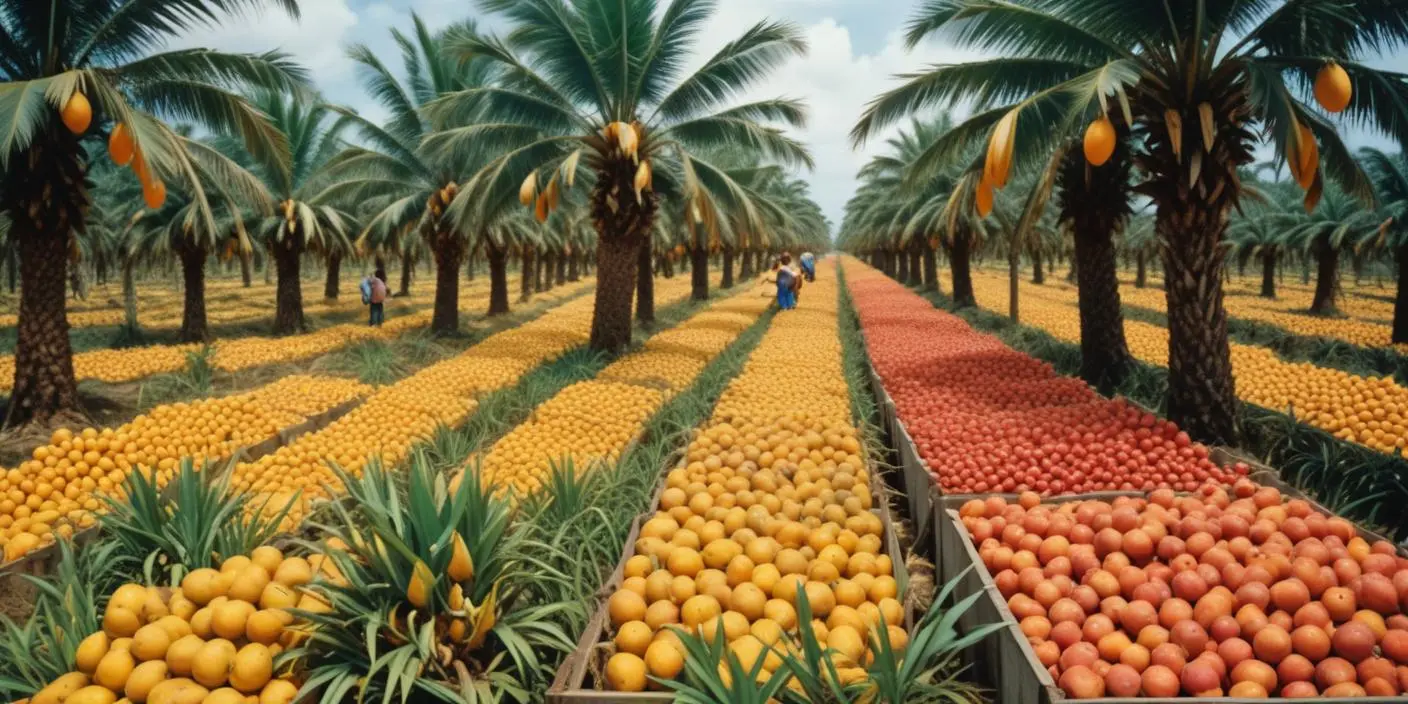From Harvest to Bottle: The Journey of Palm and Fruit Concentrates

The journey of palm and fruit concentrates begins in the fields where raw materials are grown, and ends in bottles that reach consumers around the world. This process, involving multiple stages of production, plays a critical role in ensuring the quality, flavor, and safety of the final product. Let’s take a closer look at the steps involved in producing palm and fruit concentrates.
1. Harvesting the Fruit
The journey of a fruit concentrate starts in the fields, where fruits such as oranges, apples, mangoes, and pineapples are carefully cultivated. Farmers harvest these fruits at their peak ripeness to ensure maximum flavor and nutritional content. For palm concentrates, the process begins with the collection of palm fruits, typically from oil palm trees, which are grown in tropical climates.
The timing of the harvest is essential, as overripe or underripe fruits can result in lower-quality concentrates. After harvesting, the fruits are quickly transported to the processing facility to prevent any degradation in quality.
2. Washing and Sorting
Once the fruits arrive at the processing facility, they undergo a thorough washing process to remove any dirt, chemicals, or contaminants that may have been picked up during harvesting. Sorting is the next step, where damaged, overripe, or unwanted fruits are removed, leaving only the best-quality produce for further processing.
For palm oil, this step also involves separating the fruit pulp from the husk and kernel. The pulp is the main part used for producing palm oil concentrate.
3. Juicing and Extraction
Next, the fruits are juiced or extracted to separate the liquid from the solid parts. For fruit concentrates, this typically involves crushing or pressing the fruits to release their juice. In the case of palm oil, the pulp undergoes a process of pressing or steaming to extract the oil.
In both cases, the juice or oil extracted is filtered to remove impurities and ensure purity. This step is critical for maintaining the quality and safety of the final concentrate product.
4. Concentration and Evaporation
After extraction, the next step is to concentrate the juice. This is typically done by removing excess water from the liquid through evaporation. This step is essential in turning fresh fruit juice into a concentrated form, which is easier to store and transport. The evaporation process can be done using heat or vacuum methods, depending on the type of concentrate being produced.
For palm oil, the oil undergoes further refining to remove any remaining impurities and to improve its shelf life.
5. Cooling and Packaging
Once the juice has been concentrated, it is cooled and prepared for packaging. This stage ensures that the concentrate maintains its integrity and quality. Depending on the intended use of the concentrate (e.g., for beverages or food production), the product may be packaged in bulk or in smaller, consumer-ready containers.
Packaging is an essential step that ensures the product remains fresh during transportation and storage. Modern packaging methods also help prevent contamination and extend the shelf life of concentrates.
6. Quality Control and Safety
Throughout the entire process, rigorous quality control measures are put in place to ensure that the final product meets the required standards. This includes testing for taste, texture, and safety, as well as ensuring that the product is free from harmful substances.
In the case of palm concentrates, safety regulations are especially important due to the use of palm oil, which may have environmental and ethical concerns. Sustainable practices are increasingly being implemented to address these issues and provide consumers with ethically sourced products.
7. Distribution and Final Delivery
The final step in the process is distribution. Once the concentrates are packaged and tested, they are ready to be shipped to manufacturers, food producers, or retailers. Whether it’s a large-scale beverage manufacturer or a local store, the concentrates will travel the globe to reach their final destination, where they will be used in various food products, from juices to sauces, desserts, and more.
The production of palm and fruit concentrates involves many careful steps, from harvesting and extraction to concentration and packaging. Each stage of this journey is crucial to ensuring the final product is of high quality, safe, and ready to deliver the desired flavor and nutritional benefits to consumers. As demand for these products continues to rise, innovations in processing and sustainability will ensure that the journey from farm to bottle remains both efficient and environmentally responsible.
